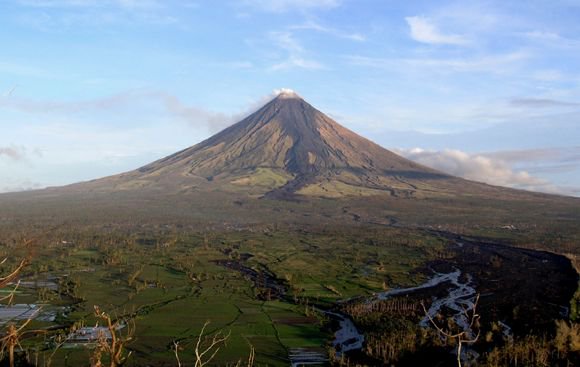 This (almost) daily post intends to follow up the activity changes of volcanoes all over the world.
This (almost) daily post intends to follow up the activity changes of volcanoes all over the world.
This post is written by geologist Rodger Wilson who specializes in Volcano seismicity and Armand Vervaeck. Please feel free to tell us about new or changed activity if we haven't written about it. -
May 7, 2013 volcano activity
Phivolcs Update 16:00 Local time : This is an update of the small phreatic eruption of Mayon Volcano (13.2500°N, 123.6833°E) which lasted 2 minutes 26 seconds. The explosion column produced was 500m high above the summit and precipitated traces of ash in the areas west-northwest of the volcano, affecting Barangays Muladbucad, Guinobatan and Nabonton, Nasisi, Basag and Tambo, Ligao City, Albay, and areas upslope of these barangays. In the past 8-hr period, only one minor rockfall event was detected by the Mayon seismic network. Seismic parameters remain within background levels and indicate no increase in overall volcanic activity. PHIVOLCS still maintains Alert Level 0 over Mayon Volcano, which means that NO magmatic eruption is imminent. However, small phreatic eruptions including small steam and ash explosions may occur suddenly with little or no warning. The public is strongly reminded of refraining from entry into the 6-kilometer radius Permanent Danger Zone (PDZ) due to the perennial threat of sudden steam-driven eruptions and rockfalls from the upper and middle slopes of the volcano.
"Five people were killed and seven were injured when Mayon Volcano spewed ash, reaching 500 meters above its crater on Tuesday morning (other sources mention 3 km high), the National Disaster Risk Reduction and Management Council reported." The explosions are not very unusual at Mayon. The alert level has not been changed prior or after this incident. In 2010 whole communities living on the slopes of the volcano had to be evacuated, something which is not the case at this moment.
The authorities have asked locals and tourists not the enter a 6 km perimeter around the summit of the volcano.
In general : Climbing active volcanoes has always a percentage of risk as sudden explosions can always occur.
The above video has been recorded in 2000 and gives a good impression of what van happen if the volcano has ash and lava bursts.
Mayon is a classic stratovolcano type of volcano capped by a small central summit crater. The cone is considered to be the world's most perfectly-formed volcano for its symmetry, which was formed through layers of pyroclastic and lava flows from past eruptions and erosion. The upper slopes of thebasaltic-andesitic volcano are steep averaging 35–40 degrees.
Mayon is the most active volcano in the Philippines having erupted over 48 times in the past 400 years.[6] The first record of a major eruption was witnessed in February 1616 by Dutch explorer Joris van Spilbergen who recorded it on his log in his circumnavigation trip around the world. (Much more, including the eruptions of the recent years can be found in Wikipedia here).
